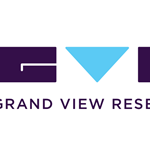Global Robotics Market Overview
The global Robotics Market is projected to reach US$ 553.14 billion by 2033, rising from US$ 56.57 billion in 2024, with a remarkable CAGR of 28.83% between 2025 and 2033. This rapid growth is fueled by advancements in machine learning (ML) and artificial intelligence (AI), rising labor costs and shortages, increasing demand for automation across multiple industries, government funding and initiatives, and the expansion of robotics applications into new sectors.
Over the past decade, the robotics industry has experienced exponential growth driven by technological advancements and rising adoption across industrial and service sectors. Robotics enhances productivity, safety, and operational efficiency, transforming industries such as manufacturing, healthcare, logistics, and agriculture. Industrial robots are particularly in demand in the automotive and electronics sectors, while collaborative robots (cobots) are gaining popularity for their ease of integration into existing workflows.
Full Access Report:https://www.renub.com/global-robotics-market-volume-and-forecast-962-p.php
Global Robotics Market Outlook
The rising adoption of robotics is closely tied to Industry 4.0, which focuses on digitization, automation, and smart manufacturing to enhance functionality, control, and safety in industrial settings. Labor cost pressures, supply-demand imbalances, and shortages of skilled labor have further incentivized companies to adopt robotic solutions as cost-effective alternatives to human labor. Governments worldwide are promoting the adoption of robotics through initiatives that enhance productivity and streamline operations, particularly supporting small and medium-sized enterprises (SMEs).
For example, the United States had approximately 33 million SMEs in 2023, while India reported 39.32 million micro-businesses, 0.61 million small businesses, and 0.06 million medium-sized businesses by February 2024 (Source: IBEF, Ministry of MSME). These initiatives provide a favorable environment for robotics adoption and market expansion.
Key Market Drivers
Growing Desire for Automation
The increasing need for automation across sectors such as manufacturing, healthcare, logistics, and services is a primary growth driver. Robots are extensively used in manufacturing for welding, painting, assembly, and precision operations, which improves productivity, quality, and efficiency. In healthcare, robotics supports patient care, rehabilitation, and surgical procedures, enhancing outcomes and operational efficiency. In logistics, robots facilitate shipping, sorting, and warehouse management, optimizing speed and streamlining processes.
The push for automation is also fueled by the demand to meet customer expectations, maintain competitive advantages, and adapt to an increasingly digital and interconnected world.
Expansion of Robotics Application Areas
The adoption of robotics is expanding beyond traditional manufacturing into diverse industries. Robotics is now applied in agriculture for planting, weeding, and harvesting, reducing labor dependency and improving productivity. In medical applications, robots assist in patient rehabilitation, diagnostics, and surgical procedures. Additionally, the retail and hospitality sectors employ robots for operational and customer service tasks. The versatility and adaptability of modern robotics systems allow them to perform a wide range of tasks, driving their adoption in new fields.
Rapid Technological Advancements
Technological progress, including AI and ML integration, enables robots to learn from their environment, adapt to new tasks, and continuously improve performance. Advances in sensor technology enhance robots’ perception and ability to interact with complex environments. Miniaturization of electronic components has led to more compact, efficient, and cost-effective robotic systems, broadening accessibility across industries. These innovations enhance the usefulness of robots and accelerate market expansion.
👉 Want to explore detailed market trends, segment insights, and forecasts? 🔗 Request Sample Report:https://www.renub.com/request-sample-page.php?gturl=global-robotics-market-volume-and-forecast-962-p.php
Challenges in the Robotics Market
High Cost of Robots
Despite the benefits, high costs remain a major barrier, particularly for SMEs. Advanced robotic systems often require hundreds of thousands of dollars for initial investment, alongside ongoing maintenance, software upgrades, and staff training. While robots can reduce long-term operational costs and improve efficiency, the high upfront investment can deter smaller businesses, slowing adoption despite potential advantages.
Complexity in Human-Robot Interaction
Ensuring safe and efficient human-robot interaction remains a technical challenge. Unlike controlled industrial environments, human contexts are dynamic and unpredictable, requiring robots to process and respond to a wide range of stimuli in real time. Sophisticated AI algorithms, sensors, and machine learning systems are necessary to ensure safety and intuitive interaction. Robots must recognize human actions, emotions, and gestures to operate seamlessly alongside people. Achieving reliable interaction in unstructured environments continues to be a significant hurdle in robotics research.
Regional Market Insights
United States
The US robotics market is among the largest and most advanced globally, driven by automation, AI, and industrial adoption. Key sectors include automotive, electronics, healthcare, and logistics, with a growing focus on collaborative robots and autonomous systems. Industrial robots are in high demand for manufacturing, while healthcare robotics is increasingly used for patient care and surgical procedures. The market faces challenges such as high initial costs, workforce adaptation, and regulatory requirements.
A notable development is FANUC America’s West Campus in Auburn Hills, Michigan, which opened in July 2024. Spanning 67 acres and costing USD 110 million, the campus houses advanced manufacturing, customized automation systems, and a warehouse capable of storing over 6,000 robots. This expansion reflects strategic efforts to promote industrial automation across North America.
United Kingdom
The UK robotics market is expanding due to advances in automation, AI, and machine learning. Robotics adoption spans industrial, healthcare, logistics, and agricultural sectors, with collaborative robots gaining popularity for flexibility. In healthcare, robots assist in elder care, medical support, and surgical procedures. Challenges include high upfront costs, workforce displacement concerns, and the need for legal and ethical frameworks for robotics use.
China
China is the largest manufacturer and consumer of industrial robots, with a rapidly growing robotics market. Government initiatives like “Made in China 2025” promote advanced manufacturing, automation, and robotics adoption to improve productivity and reduce labor costs. Service robots and collaborative robots are increasingly used in retail, healthcare, and logistics. Challenges include high costs, complex integration, and shortages of skilled labor for programming and maintenance. Nonetheless, the market is projected to continue its strong growth trajectory.
United Arab Emirates
The UAE aims to be a global leader in innovation and technology, driving significant growth in its robotics market. Investments are being made across manufacturing, logistics, healthcare, and defense. Initiatives like the UAE Strategy for Artificial Intelligence support automation adoption. Robotics applications in healthcare, manufacturing, logistics, hospitality, and smart city initiatives (e.g., Dubai) are expanding. Key challenges include regulatory frameworks and workforce adaptation to new technologies.
Market Segmentation
Industrial Robotics Market & Volume
· Automotive Industry and Forecast
· Electrical and Electronics Industry and Forecast
· Metal and Machinery Industry and Forecast
· Plastic and Chemical Products
· Food Industry and Forecast
· Others
Service Robotics Market & Volume
· Transportation & Logistics
· Professional Cleaning
· Medical Robotics
· Hospitality
· Agriculture & Field
Countries
America: United States, Canada, Mexico, Others
Europe: France, Germany, Italy, Spain, Others
Asia Pacific: China, India, Japan, Republic of Korea, Thailand, Others
Rest of the World
Competitive Landscape
Key players are analyzed across overview, key personnel, recent developments and strategies, and financial insights. Notable companies include:
· KUKA
· iRobot Corporation
· Intuitive Surgical, Inc.
· Panasonic Corporation
· Fanuc
· ABB Ltd
· Stryker Corporation
👉 For deeper analysis, detailed segment data, and company insights: 🔗 Request Customization Report:https://www.renub.com/request-customization-page.php?gturl=global-robotics-market-volume-and-forecast-962-p.php
Conclusion
The global robotics market is entering a period of unprecedented growth, driven by technological innovation, automation demand, government initiatives, and expanding applications across diverse sectors. While challenges such as high costs, complex human-robot interactions, and workforce adaptation remain, the overall market trajectory is highly positive. Continued innovation in AI, machine learning, and sensor technologies will further enhance the capabilities and adoption of robotics, ensuring safer, more efficient, and more productive operations across industrial and service domains worldwide.
Note: If you need details, data, or insights not covered in this report, we are glad to assist. Through our customization service, we will collect and deliver the information you require, tailored to your specific needs. Share your requirements with us, and we will update the report to align with your expectations.






